About
Ideally located in the heart of the capital, Casino Luxembourg – Forum d’art contemporain, founded in 1996, holds contemporary art exhibitions with an international programme of mainly younger-generation artists. The art centre houses public spaces with various uses and vocations, combining today’s art with a warm and friendly meeting place: the ground floor, next to a bookshop and a library specialising in contemporary art, and has an area dedicated to learning activities. The first floor is exclusively used for temporary exhibitions, so artists’ monographs and themed exhibitions are shown here. These are completed by a varied programme of guided tours, conferences, concerts, and workshops for all. Far from any museological concerns, Casino Luxembourg functions like an artistic and experimental think tank heading for the latest trends in the art scene.
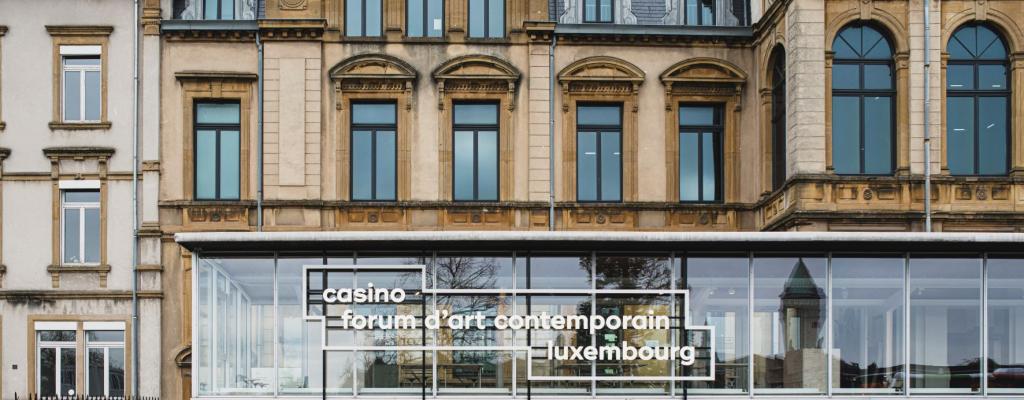
A contemporary art forum
At Casino, the artist is paramonunt.
By positioning itself as a springboard for the careers of emerging artists, the art centre supports their development and achievements on their artistic journey, while offering them visibility to a diverse audience and within a vast international professional network. Since its establishment in 1996, Casino Luxembourg has been the country’s leading contemporary art centre with an international profile. Always on the lookout for new trends, it functions as a catalyst and defender of ideas and thoughts on contemporary art, promoting exploration, experimentation and artistic innovation.
International exhibitions, mainly dedicated to artists’ monographs, are organised exclusively by Casino or in collaboration with other institutions. Since the production of new works is its core remit, Casino invites artists to utilise the premises in full, in order to create, beyond the exhibition itself, an environment conducive to discovery and exchange in conjunction with their work. Support for the public – one of Casino’s main tasks – is provided through a pro-active, creative and ambitious visitor assistance and educational programme.
In addition to exhibitions, the Casino team runs a vast programme addressing the different aspects and challenges of contemporary creation. Encounters, master classes and other conferences ensure direct contact between artists and the public, an essential link for the comprehension of today’s art. For the 2023/2024 season, Casino is looking at the concept of fiction through a research laboratory bringing together art students and international intellectuals, and the launch of its own book club.
A place for exchange
The “Aquarium”
Privileged for its intimacy, the “Aquarium” space, hosts performances, concerts and plays and continues to encourage the creation of new forms of expression for a curious audience.
InfoLab
Casino Luxembourg has its own library, the InfoLab, which is also the perfect room for conferences, film screenings and meetings between the public and artists. It is the ideal place to extend your visit and its selection of books complements the current exhibition(s).
Books, artists' files and journals can only be consulted on site.
The InfoLab's collection of documents (exhibition catalogues, monographs, artists' books) can be consulted via the online union catalogue at: https://www.a-z.lu
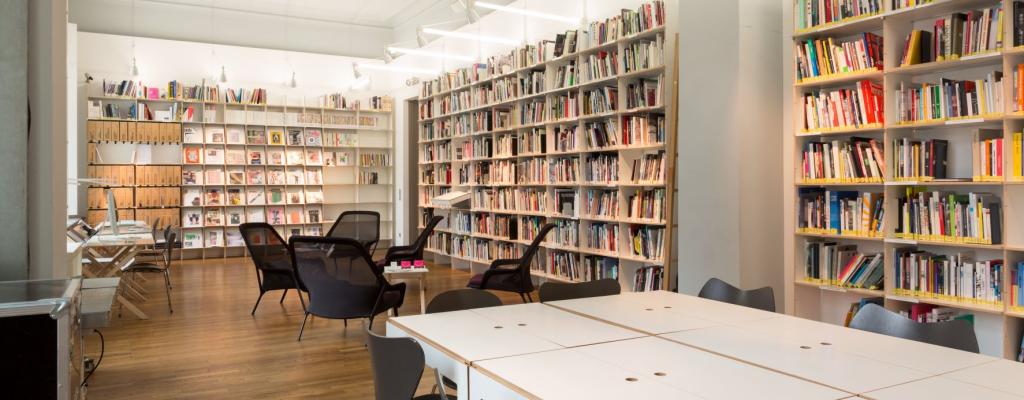
ArtBookBox
In our ArtBookBox bookshop you will find not only artists’ books and exhibition catalogues, but also theoretical and didactic books, essays, DIY magazines, as well as a selection of postcards, bookmarks, pencils, vinyl records, eco-responsible bags and other gift ideas.
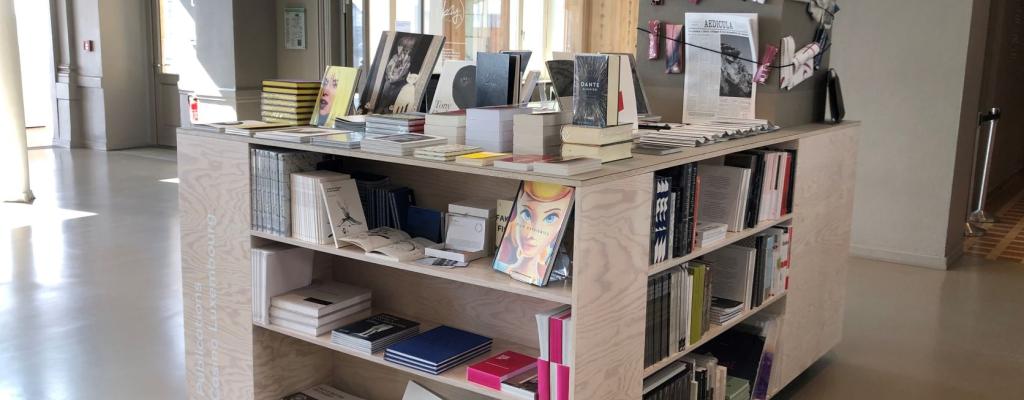
The history
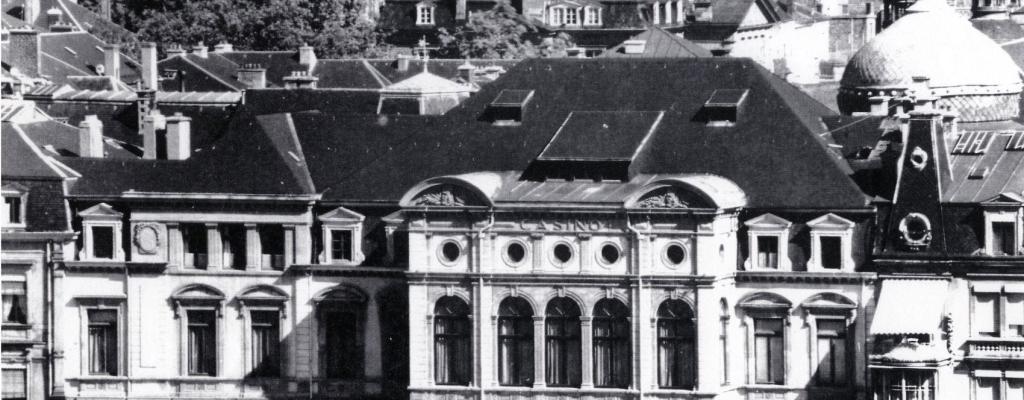
In a historic 19th century building – a former Casino Bourgeois – the forum welcomes all lovers of contemporary art, whether professionals in the field, enlightened enthusiasts or novices seeking an introduction to the unique universe of contemporary creation. With an international reach and always on the lookout for new trends, Casino acts as a catalyst and defender of ideas and reflections on contemporary art, promoting artistic exploration, experimentation and innovation.
Read also:
The history.pdf Permanent display
Over the years, certain artworks – some of them very discreet – have imbedded themselves into the building and its environs. Some of them subsequently vanished beneath coats of paint or were victims of sundry renovations. Other clearly luckier ones have survived. Such is the case with Nedko Solakov’s A Wise Thought in a Circle and Jacques Charlier’s La Surface de l’Art. Still other works were specially commissioned for exhibition, which is the case with Zeitgeist: Karl Cobain by Claudia Passeri, Beautiful Steps #10 by Lang/Baumann, and Zäit Wuert by the artist collective LAb[au]. All these works are now part of Casino Luxembourg’s permanent display.
facade, rue Notre-Dame
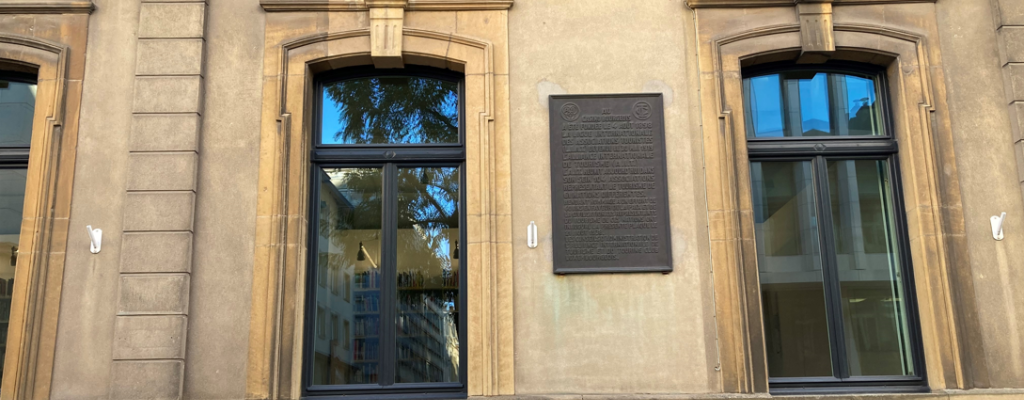
“What does La Surface de l’Art (The Surface of Art) refer to? To the century old dust that has been removed, which now reveals the true appearance of the place where we hope that art will appear? Or does this act mean that we must go beyond the facade of the edifice, that we must enter an art centre if we want to see art? As with everything, perhaps one has to look beneath the surface, to get under the skin, in order to perceive the essence. But is one really guaranteed to see art when entering? Is the building enough to identify everything within it as belonging to art? […] The main thing is not to content oneself with the surface of art: we have to dust off our minds as well as the work in order to arrive at what really counts.”
– Speech by Enrico Lunghi, artistic director (1996–2008), during the opening of the exhibition Jacques Charlier – La Surface de l’Art, 5 June 1997.
Jacques Charlier (*1939, Liège, Belgium; lives and works in Liège) is a many-faceted artist who does paintings, graphic novels, video, and photography. His offbeat approach brings a witty and self-mocking perspective to the art scene.
KAY Restaurant
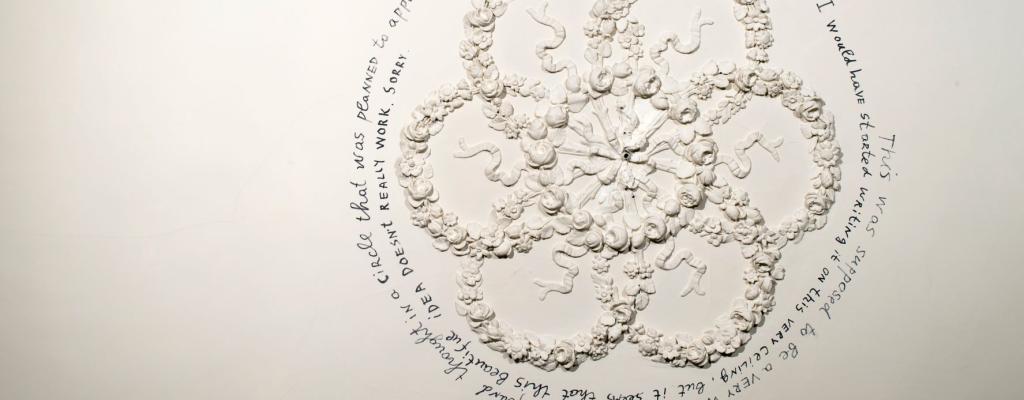
“This was supposed to be a very wise and relatively profound thought in a circle that was planned in my head to appear in the most natural way as soon as I would have started writing it on this very ceiling, but it seems that this beautiful idea doesn’t really work. Sorry.” – Nedko Solakov
Nedko Solakov
(*1957, Cherven Briag, Bulgaria; lives and works in Sofia, Bulgaria) is a storyteller. His works deal with the position of the artist and his work within society. He comments his thoughts and reflexions through short handwritten texts or drawings put directly on exhibition walls.
facade rue Notre-Dame
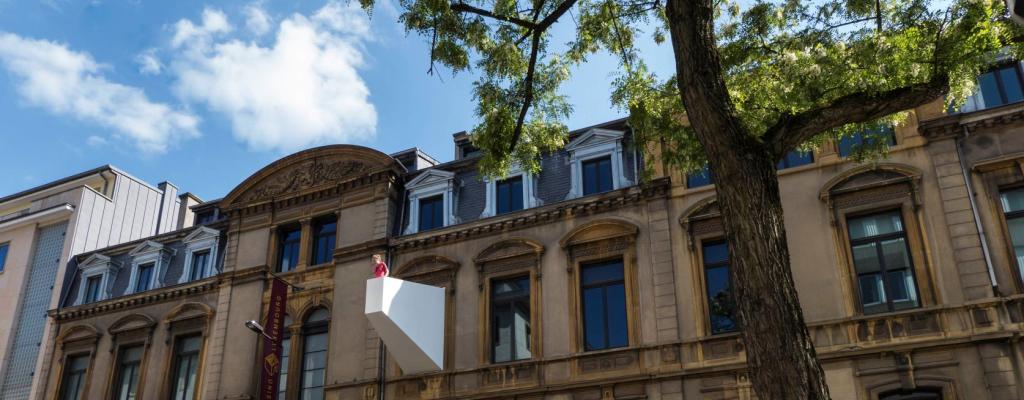
In December 2012 Casino Luxembourg invited five international artists to take part in a competition with the purpose of creating a permanent artistic design for the north facade of the building in the Rue Notre-Dame. The jury’s unanimous decision was in favour of the project Beautiful Steps #10 by the Swiss artist duo Lang/Baumann. In May 2014, Lang/Baumann installed a balcony in the form of a frustum, or truncated pyramid, in the middle of the building’s northern facade, the aim being to trigger a dialogue between the interior and exterior space. The balcony, three metres tall and made from white-painted glass fibre laminate, appears from the outside to be a closed geometrical form, a large architectural protuberance into empty space. Only from inside the building, on the first-floor landing, does one realise that this “balcony” actually can be used for its intended purpose.
Beautiful Steps #10 is part of the Beautiful Steps series Sabina Lang (*1972; lives and works in Burgdorf, Switzerland) and Daniel Baumann (*1967; lives and works in Burgdorf, Switzerland) have been working on for several years; the series deals with an original and extraordinary exploration of the definitions, forms and functions of stairs.
Financial support: Les Amis des Musées d'Art et d'Histoire Luxembourg
Restaurant
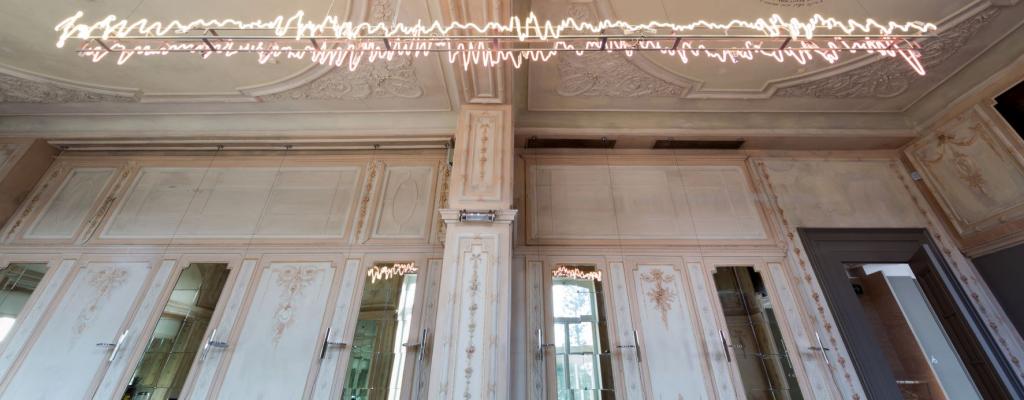
With her lighted neon work, Zeitgeist: Karl Cobain, Claudia Passeri has added a hint of history to the restaurant on Casino’s ground-floor. It is composed of two soundwaves, one being a transcription of the opening line of Karl Marx’s Communist Manifesto, the other being a line sung by Nirvana’s lead singer, Kurt Cobain, in the group’s cover of David Bowie’s The Man Who Sold the World. This piece thereby links two remote periods and ideologies that are nevertheless related to Casino Luxembourg’s own history: Casino Bourgeois was founded in the days of Karl Marx while the Forum d’art contemporain was launched two years after Kurt Cobain’s death.
Claudia Passeri
(*1977; lives and works in Luxembourg and Perugia, Italy) creates site-specific interventions and contextual pieces that explore human perception in relation to place. Depending on the site and the context, the work takes on social, political, and environmental aspects. Her research has a neo-Romantic aspect that seeks, frequently via the use of irony, to reveal the mechanisms that activate the human creative processes, which transform how we view the world.
facade, boulevard F.D. Roosevelt
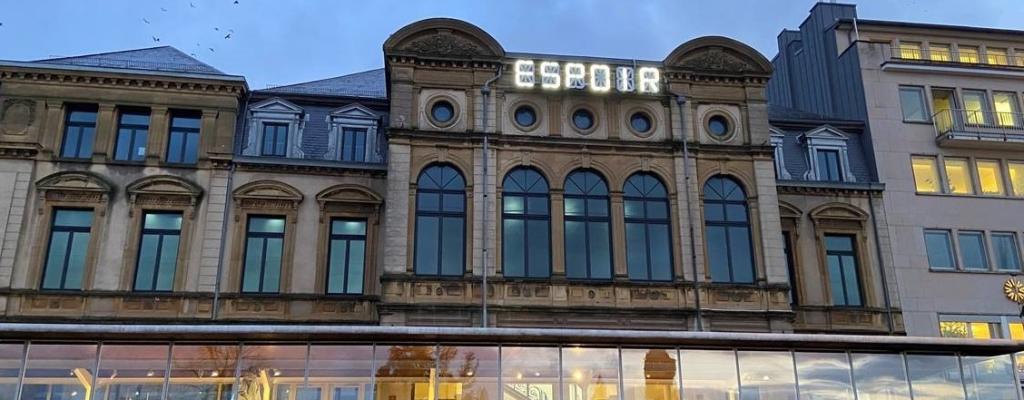
The installation Zäit Wuert (Luxembourgish for Time/Word) consists of a six-letter illuminated sign mounted on the Casino facade on boulevard Roosevelt. The displayed words depend on a process that randomly generates six letters while verifying each combination in German, English, French and Luxembourgish dictionaries. If no word is found, the process starts all over again. Each query takes a different time, which in turn defines the duration of the word’s display. Based on a chance operation, the installation replaces the sign’s original six letters: c-a-s-i-n-o. This writing process supplants traditional narration with the polysemy of an agnostic statement, a concrete poetry that encourages interpretation and association.
LAb[au] is composed of Manuel Abendroth, Jérôme Decock and Els Vermang, based in Brussels, Belgium. In their practice, the artists investigate the relation between art and language not only by means of written words and other forms of coded language, semantics, but also through signs, or semiotics. Likewise, they take a linguistic approach, employing information and communication science in the field of art.
Partners
Casino Luxembourg - Forum d'art contemporain is financially supported by

With the support of

In partnership with
